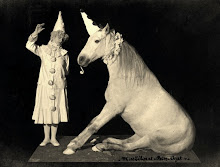
GABA is associated with the consumption of alcohol, as alcohol is thought to reinforce the movement of chloride ions, which enter the cells and render them “less sensitive to the effects of other neurotransmitters” (Barlow, Durand and Stewart 2009). This action qualifies GABA as inhibitory, and this effect may be what suppresses anxiety, when the anxiety is coupled with the consumption of alcohol.

In Corbin, Fromme and Gearhardt’s study, the stimulant effects of alcohol would cause the person to associate positive feeling with drinking. The subscales used within this study which define the difference between stimulation and sedation do not take into account the sedation of fear, but rather use sedation as qualifying something more akin to a lack of energy. This sedation is not connected to the inhibition of anxiety. Instead, the positive feelings associated with the stimulant effects would seem to be a byproduct of some level of comfort rather than being associated with symptoms of stress; the closest by definition would be excited, but in relation to the other words on the list it comes to mind as being more subjective than physical. So for those that feel stimulation with regards to alcohol consumption, that feeling is merely creating an association between drinking and positive sensation. This primes the subject in the sense that they are then likely to drink in response to discomfort or negative feeling.
What is actually happening for these people is the facilitation of GABA activity in areas of the brain associated with emotion, such as the amygdala and the amydalofugal pathway (Panksepp).

The discovery that GABA activity is coupled with the benzodiazepine receptor in what is sometimes referred to as the FEAR pathway, stretching from the amygdala to the nucleus reticularis pontis caudalis (Panksepp) certainly supports the theory that alcohol helps to suppress anxiety. This is the case because alcohol reinforces GABA activity, which inhibits the cells with benzodiazpine recetors along this so-called FEAR pathway.
Interesting stuff, thinking about why we drink and the experiences that may make us more susceptible to consumption. Alcohol consumption has become such a regular recreational activity that we don’t really consider all the factors which play into it (or I suppose maybe we just don’t want to). If we’re going to treat drinking as just another aspect of everyday life, then perhaps we should take a more objective stance on our personal biology as well...?
Barlow, D. H., Durand, V. M.., Stewart, S. H. (2009). Abnormal Psychology: An Integrative Approach. Ontario, Canada: Nelson Educaton.
Corbin, W. R., Gearhardt, A., Fromme, K. (2009). Stimulant alcohol effects prime within session drinking behaviour. Psychopharmacology, 197: 327–337.
Panksepp, J. (1998). Affective Neuroscience: The Foundations of Human and Animal Emotions. New York, New York: Oxford University Press.

No comments:
Post a Comment